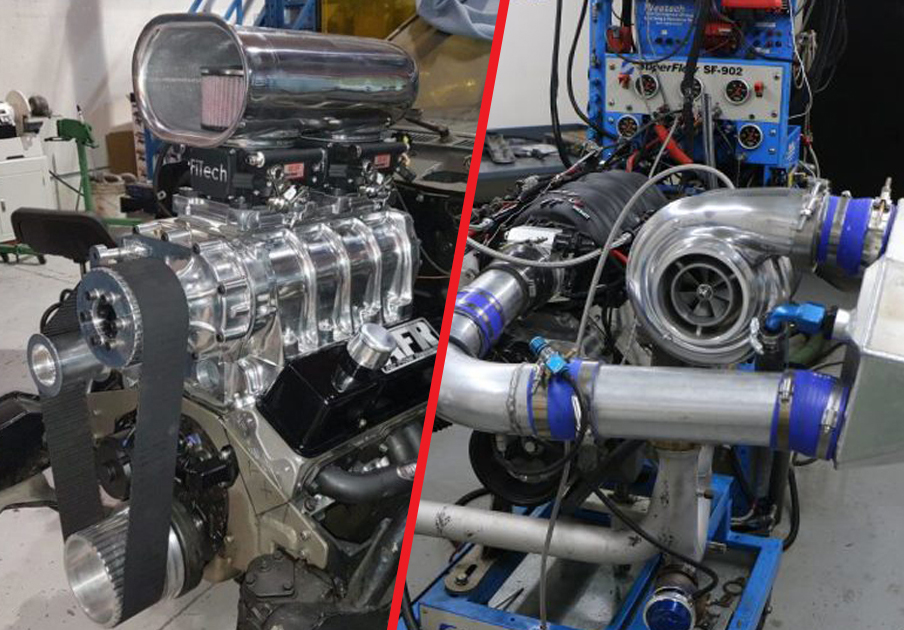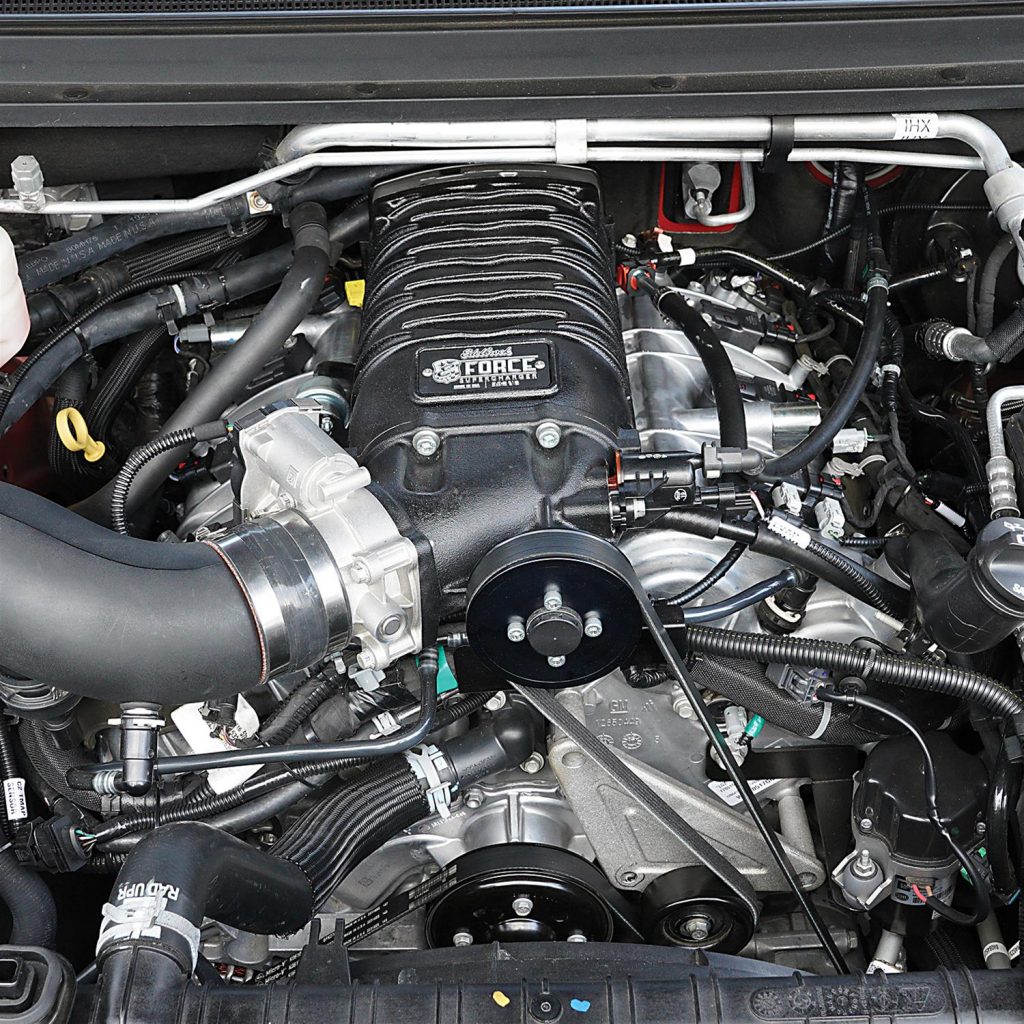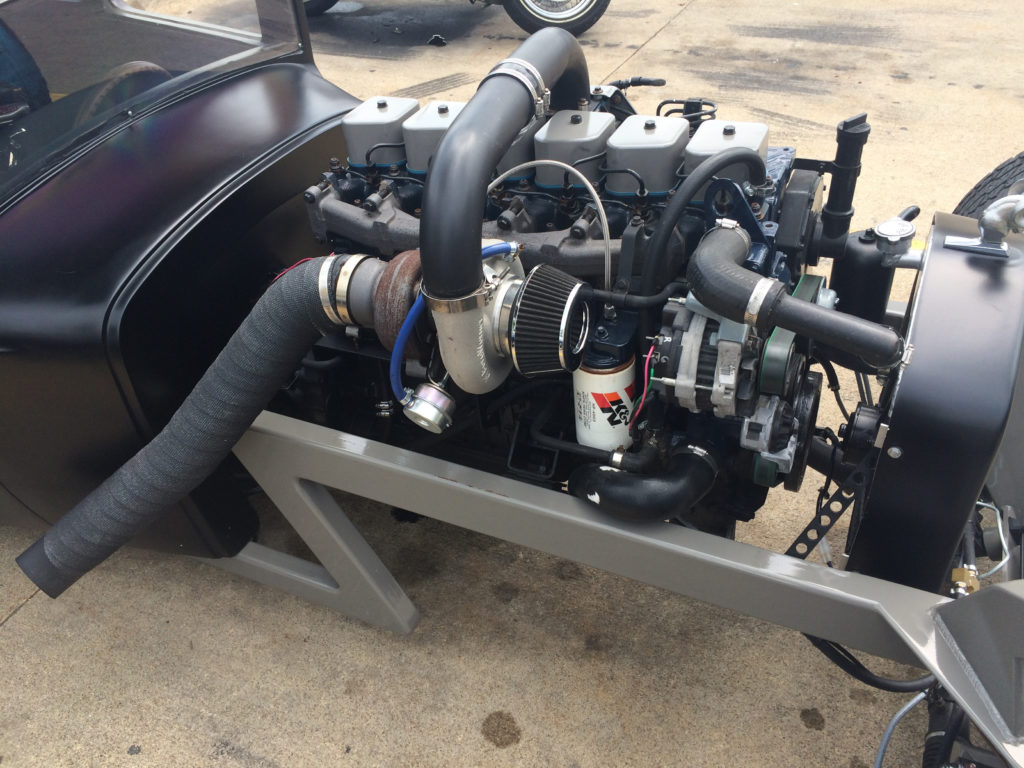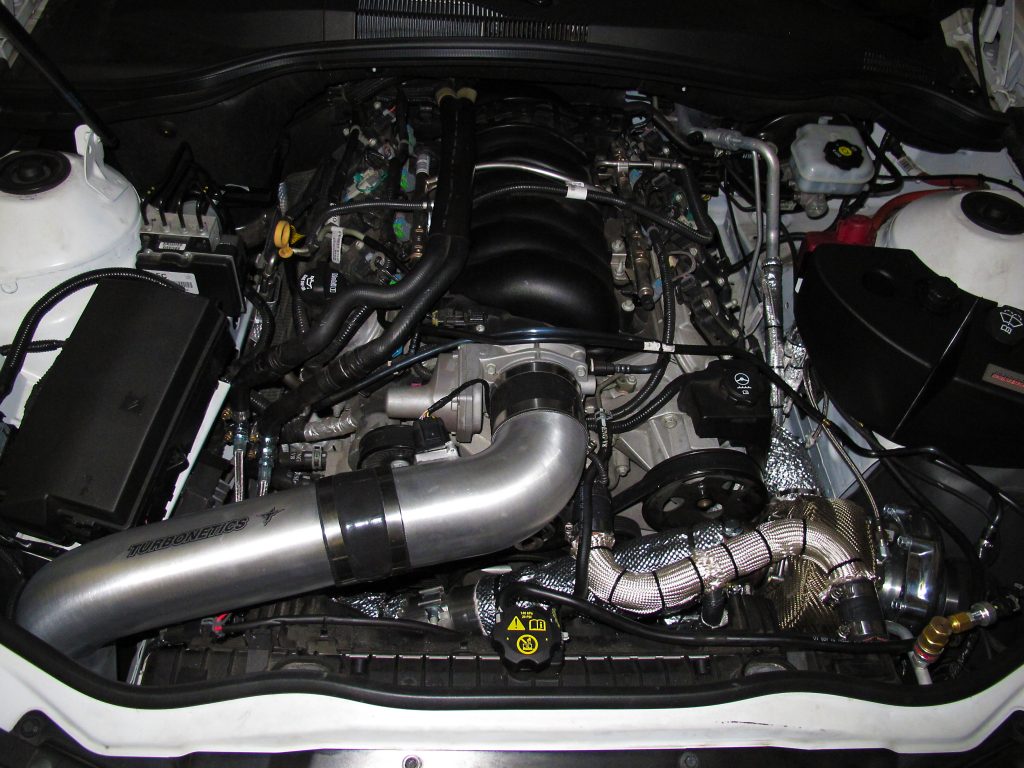
We talk about forced induction a lot around here, and that’s because it can be a great way to add some serious performance without a whole lot of hassle and expense (relatively speaking, of course). And when it comes to forced induction, there are essentially two routes you can go: either a turbocharger or a supercharger.
While we’ve got plenty of articles on both subjects, it occurred to us that we’ve never really taken a step back and discussed the fundamental differences between a turbocharged and supercharged setup.
So consider this a top-level, 101-style article that’ll delve into some of the basic differences between turbos and superchargers. We’ll include some handy links too, so you can really get into the weeds on forced induction, if you want to.
Superchargers are often referred to simply as “blowers,” alluding to the function they’re performing, whereas in certain circles, you may hear gearheads call a turbo a “snail,” thanks to the housing’s signature shell-like shape. The increased intake air volume/pressure they generate is typically just called “boost.”
What is Forced Induction?
But before we get to superchargers and turbochargers, let’s take an even further step back and talk in general terms about the benefits of forced induction and how it works.
While an engine will naturally suck-in air through the normal intake stroke of the piston, forced induction is when you use an external device to push more air into the engine during that intake process.
Though this may be an overly-simplified explanation, think of this external device as an upstream compressor. The additional air it sends into the combustion chamber essentially bumps the engine’s compression ratio. The increased compression can result in better efficiency and improved performance.
That “external device” can either be a supercharger or a turbocharger.
So yeah, they both do the same basic job of forcing more air (boost) into an engine’s combustion chamber—the key difference between them is how each one is powered. So let’s dive in.
The Difference Between a Turbocharger and Supercharger

In terms of historical timelines, supercharging came first, evolving out of a process for improving the efficiency of blast furnaces. The earliest supercharged engines were being developed before of the turn of the 20th century.
Recalling our simplified explanation above, a supercharger is essentially a compressor that pushes air into an engine’s combustion chamber, which we refer to as boost. And it works by using an impeller to force the air along an intake tube.
We’re being tactfully brief here, because we’ve already written several comprehensive articles on superchargers. Want a full-blown (pun intended) explanation on several supercharging topics? Our Blower Basics series is a great place to start.
Those impellers within a supercharger are typically spun by a belt that’s driven off the engine crankshaft. In many cases, that’s the easiest way to tell if a forced induction engine is supercharged or turbocharged. If you see a belt coming off a pulley on a module attached to the intake, then you’re likely staring at a supercharger.

So, How Does a Turbocharger Work?
Now, here’s the key difference between a supercharger and a turbocharger:
Unlike a supercharger, turbochargers aren’t driven by a belt off the engine’s crankshaft. Instead, the air is pushed by a turbine fan that’s spun by the engine’s exhaust gasses.
Imagine two fans on either end of a shaft. One fan is inside the exhaust tubing and is being spun by the exhaust gasses as they’re are pushed out of the engine. As that exhaust-side fan rotates, it spins the shaft, along with the other fan on the opposite side. That other fan is inside the intake tube and, when spun, it forces air into the combustion chamber to create boost.
Again, this is a really, really simplified explanation. If you’re looking to get in the weeds here, we recommend this article written by automotive engineer and friend of OnAllCylinders, Doug Erber: Turbos 101: Examining the Fundamentals of Turbocharging
That means, instead of a belt, a turbocharger system relies on a network of exhaust and intake tubing. So, if you see an engine with a snail-like turbine housing connected to a bunch of metal piping near the exhaust manifold(s), then it’s probably a turbocharged motor.

Turbochargers vs. Superchargers
So, now that you know the basic difference between the two forced induction methods, which one is right for your engine?
For starters, you’ll have to see what the aftermarket performance upgrade market offers. There’s a good chance that plenty of folks have dedicated years to refining your specific engine’s performance capability and, as such, have determined what’s the best match for the specific engine’s design, and desired boost and power levels, or the specific vehicle’s physical size limitations/configuration. It’s much, much easier to start with a turbocharger kit or supercharger kit than it would be to fabricate custom one-off parts.
That means a simple trip to your favorite performance auto parts website may indicate whether you have options for either a supercharger or turbocharger—and in some instances you may have both.
But if you’re looking for a definitive answer to whether supercharging is better than turbocharging (or vice versa), you won’t find it. That’s because, like so many automotive performance upgrades, there are tradeoffs.
Space is a big one, as a turbocharger will require room in the engine bay for both exhaust and intake tubing. Conversely, a supercharger will need to re-route your accessory belt drive system and may even demand a taller hood.
Plus, we didn’t talk about intercoolers here, but an intercooler can be a vital part of a supercharged or turbocharged system. An intercooler cools-down the compressed intake air to improve performance, but demands more space for the intercooler body and tubing. We’ve got a two-part Intercooler Guide that’ll give you plenty of details. Click here to get started on Part One.

Beyond physical size, the way supercharger and turbo systems perform can certainly be a factor too. Due to their inherent design, turbocharger and supercharger systems can behave a bit differently. Back in the day, “Turbo Lag” was a real problem for turbocharged performance cars (though it’s been largely mitigated by advancing technologies). Conversely, power delivery for a supercharger tends to be more predictable, because it correlates directly to engine speed. Perhaps more important than sheer horsepower output, turbochargers can be more efficient, without the need for a power-robbing supercharger pulley system.
So it all boils down to what works best for your specific application, as there are a ton of variables to consider.
But at least now you know some key differences between how turbochargers and superchargers work, and you can start researching a bit deeper to find the best system for your car or truck.

[…] Porsche wanted to equip the 911’s flat six with a turbo, it had to figure out how to vent all that extra exhaust heat. So, they redesigned the decklid. […]
[…] probably say its supercharger. In addition to increasing the engine’s overall power output, forced air induction was central to the Merlin’s ability to perform at high altitude. As the Merlin continued to […]
[…] But it’s bringing the goods, in the form of a LT2 V8 making close to 500 horsepower—without turbos or superchargers. Plus it’s the first time a convertible has paced the Indy 500 in a decade. So yeah, top of […]
[…] Let’s assume that you want to modify your engine with a mild improvement that will make more power. The way to do that is to create a situation where the engine captures more air in the cylinders. Mixed with the proper ratio of fuel, the engine will make more power. Increasing airflow can be accomplished literally in hundreds of different ways. You can increase the compression, change the cylinder heads to increase the airflow, change the cam timing, add a better intake manifold, add a set of headers, a mix of all of these ideas, and so on. Or you could possibly add a supercharger. […]